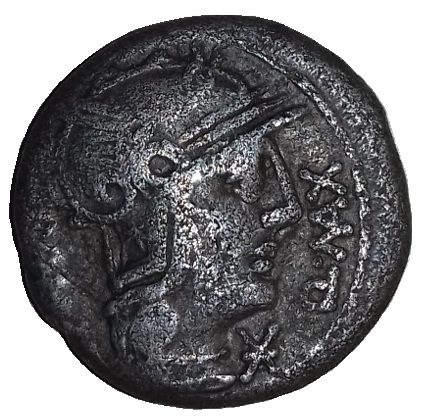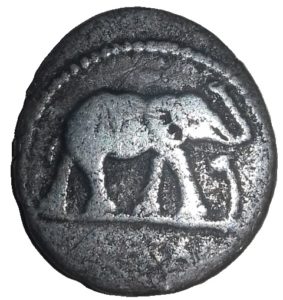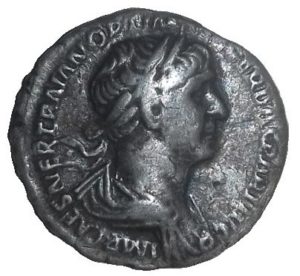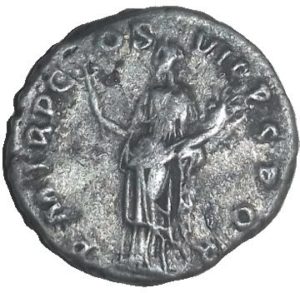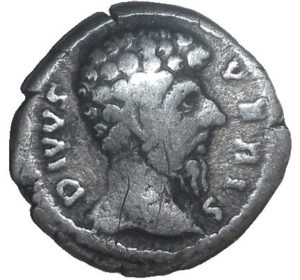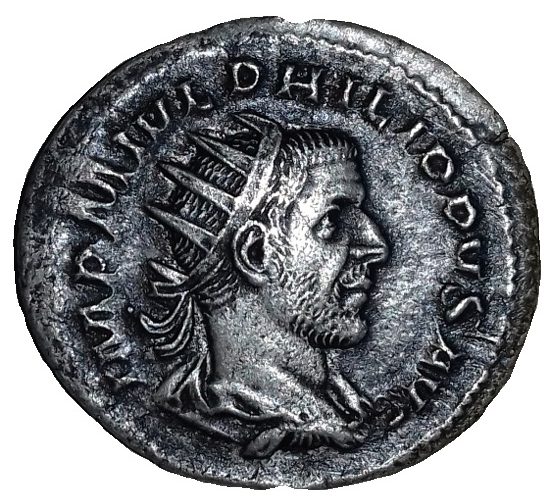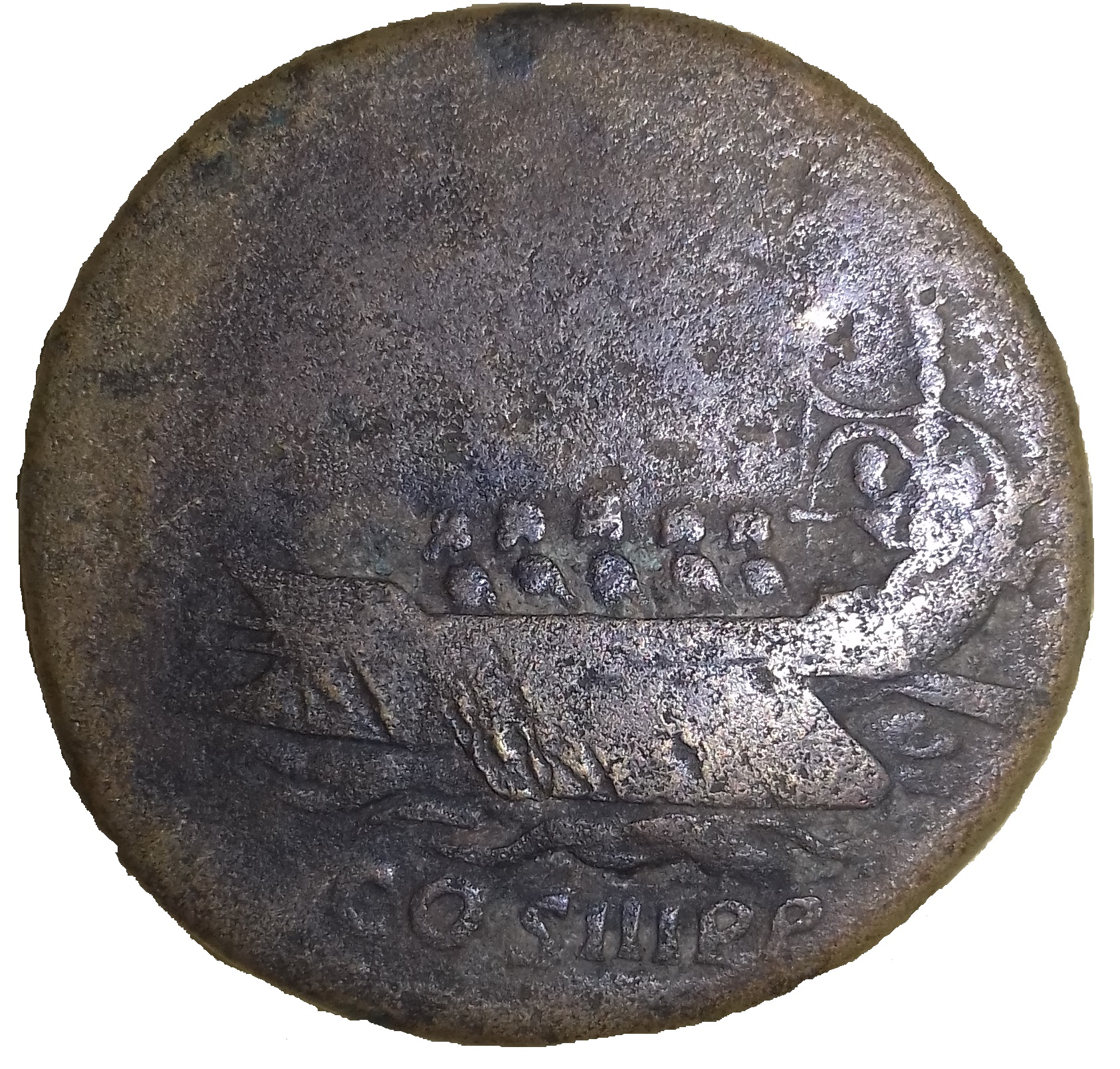Hello, last week I presented “5 Roman coins in billon”. In this article, I will therefore present “5 Roman silver coins”. In the same way as in the previous one, we are going to do numismatics here. So we will decipher them and try to understand the messages they wanted to convey in Roman times. In this article, therefore, there will be analysis, description and interpretation. Good reading.
First Roman coin in silver : the denar of Fabius Maximus
This first Roman coin is a denar of Fabius Maximus. Fabius Maximus was born in Rome, in 275 BC and died in the same city in 203 BC. Obviously, as he lived under the Roman Republic, he was never emperor. However, he was still a politician. Indeed, he was twice consul around the year 230 before our era then later, he was also dictator in – 216. During that, he also fought various battles in Carthage and once his dictatorship ended, he became consul again three times around 210 BC.
This silver coin weighs 3.44 grams with a diameter of 17mm. On its obverse, we can see the helmeted head of Roma with under it, a monogram (XVI) signifying that the deniers were worth 16 as. On this side, we can also see the captions “ROMA Q MAXIMUS” (Rome Quintus Maximus). As for the reverse, we can see a cornucopia on a thunderbolt with laurel wreaths surrounding them. Unlike the obverse, this side has no legend. This coin was minted long after the death of Fabius Maximus, around 130 BC. So this is a kind of “re-broadcast”.
Second Roman Coin in Silver : the denar of Julius Caesar
This second Roman coin is a denar of Julius Caesar which is also very well known to collectors. Julius Caesar was born on July the 13th in 100 BC in Rome and died in the same city, in the Ides of March, on March the 15th, 44 BC. He is certainly the most famous figure of Ancient Rome and was a great strategist. During his life, he was several times consul (-59; -48; – 46 to – 44) but also several times dictators (-49; -47: -46 to -44). He is also well known for the conquest of Gaul and many other territories. He died at the age of 66, murdered with 23 lashes. One more thing, Julius Caesar was never emperor. If you want to know more about it, I invite you to read my article The most famous popular belief about the antiquity
This silver coin weighs 3.00 grams with a diameter of approximately 17mm. On its obverse, we can see an elephant crushing what appears to be a snake with the caption underneath: “CAESAR” (Caesar). On its reverse, we can see various pontifical instruments: a sprinkler, a sacrifice ax, a sacrifice hat and a simpulum. As for the previous coin, this reverse has no legend. This coin was therefore struck after the end of the Gallic War (58-52 BC). Indeed, the elephant on the obverse represents the Romans and the snake the Gauls. It is therefore a coin celebrating the victory of the Romans over the Gauls.
Third Roman Coin in Silver : denar of Vespasian
This third Roman coin is a Vespasian denarius. Vespasian is a Roman emperor born on November the 18th, 9 AD at Rieti (Italian city) and died June the 23rd, 79 at Aquae Cutiliae (Roman baths). During his reign, he enabled the Empire to rise again from the Civil War. For this, he put various reforms in place, both fiscal and legislative. He also reorganized the army and restored Rome, which had been the victim of numerous fires. He was also very active in the construction field. Moreover, the Colosseum in Rome was created thanks to Vespasian. He died at almost 70 years of illness.
This silver coin weighs 3.14 grams with a diameter of 17mm. On its obverse, we can see the award-winning bust of Vespasian, surrounded by the captions “IMP CAES VESP AVG P M COS IIII” (Emperor Caesar Vespasian, august, grand pontiff, consul for the fourth time). On its reverse, one can see, as on the denarius of Julius Caesar, pontifical instruments: a sprinkler, a sacrifice vase, a lituus and a simpulum. The inscribed captions are “AVGVR – TRI POT” (Augur, clothed with the power of tribunitian). This coin was therefore minted when Vespasian bore the titles of “Caesar”, “Augustus” and “Grand Pontif” but also when he was “Consul” for the fourth time. But still when he was “omen” and he had the “tribunitian power”.
Fourth Roman Coin in Silver : denar of Trajan
This fourth Roman coin is a denar of Trajan. Trajan is a Roman emperor born on September the 18th, 53 AD in Italica and died August 8, 117 AD in Selinus. During his reign, he led many military campaigns against different peoples including the Germans, the Dacians but also the Parthians. Following his reign, the Roman Empire reached its peak and reached its maximum size. He died at almost 64 years of age from illness and from a stroke (cerebrovascular accident) leaving him with hemiplegia.
This silver coin weighs 2.93 grams with a diameter of 18mm. On its obverse, we can see the bust of Trajan, surrounded by the captions “IMP CAES NER TRAIAN OPTIM AVG GERM DAC PARTHICO” (The emperor, Caesar, Nerva Trajan, the best, Germanic, Dacic, Parthic). On his lapel, Felicitas can be seen standing, holding a cornucopia in his right hand and a caduceus in his left hand. The inscribed captions are “P M TR P COS VI PP SPQR” (Grand Pontiff, endowed with the tribunitian power, consul for the sixth time, father of the country, [Roman motto] in the name of the Senate and of the Roman people). This coin was therefore minted when Trajan bore a lot of different titles such as “Caesar”, “Grand Pontiff”, “consul (for the sixth time)”, father of the country “…. But also when he wore different nicknames such as “Germanic”, “Dacic” or “Parthic”.
Fifth Roman Coin in Silver : the denar of Lucius Vérus
This fifth Roman coin is a denar of Lucius Vérus. Vérus is a Roman emperor born on December the 15th, 130 AD in Rome. And died on January 169 AD in Altinum (Roman city in Italy). During his reign, he led victorious campaigns in Armenia as well as against the Parthians. But when he was not in the countryside, he was known to lead a luxurious life filled with excess such as gambling, chariot races… He died in 169 AD, sick and tired of life that he led.
This silver coin weighs 2.77 grams with a diameter of 18mm. On its obverse, we can see the bust of Lucius Vérus with the captions “DIVVS VERVS” (Divine Verus). On its reverse, we can see a funeral pyre with a quadriga at its top. The legend inscribed is “CONSECRATIO” (Consecration). This coin was therefore struck when the emperor had just died. This coin can therefore be seen as a tribute to Lucius Vérus but also as a means of communication to announce the death of the emperor. Moreover if you want to know more about coins as a means of communication, I invite you to read my article on this subject : The roman coin : a way of communication.
Here are the presentations of 5 Roman silver coins. I hope you enjoyed this article and that it taught you some things. Also, feel free to comment on what coin you would like me to feature or just what you think of this article. Also, tell me what topic you would like me to talk about in a future article. In fact, the next one will be on “5 Roman coins in gold”. See you next week !
Receive my free book Around the Roman Coin by clicking here

